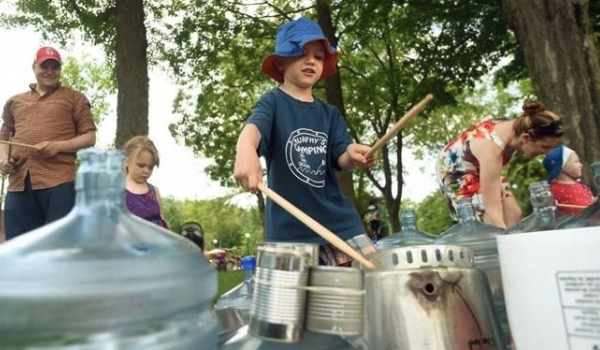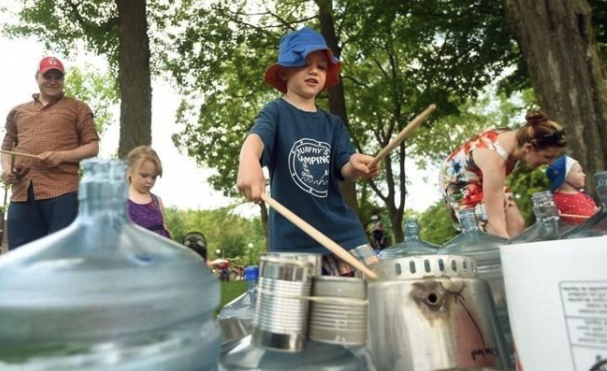My expansion into corporate music-making services was inspired by a study from Cornell University that noted marketers and corporate head offices routinely use music to “mindlessly” influence customers in places of business (e.g., supermarkets, gyms, hair salons) but paid little attention to the potential influence of music on workplace behaviour.
Why should companies care about music and workplace behaviour?
Research has shown that:
- Employees often listen to music on the weekends as a way to de-stress from the workweek. Bringing music into the workplace is an easy way of providing de-stressing opportunities during a workday.
- Undergraduate students were able to focus longer on an experimental task when listening to music than students working without music.
But it isn’t just about listening to music.
Studies have shown how music-making can impact the workplace:
- Rhythmic music leads to a phenomenon called “interpersonal motor coupling” where team members synchronize their behaviours and attitudes resulting in increased cooperation.
- After five rounds of experimental decision making, singing together can increase cooperation within groups.
- Music-making can be beneficial in business meetings to arouse emotions and moods that stimulate cooperation, cue memories of past (good) experiences, increase retention of information, and reduce boundaries between participants.
The idea of employees making music together is not a novelty. An employee “songbook” created by International Business Machines was designed to engage employees from 1920s through 1970s.
One often can’t help being drawn into music in some way – swaying to the beat, tapping a foot, clapping along, singing to a familiar song. Music is an inherent part of human culture with a strong influence in the evolution of our species; yet nowadays many people often have very little opportunity to make music. Companies could greatly increase productivity and lift employees’ moods through incorporating music and music-making into their corporate culture.
Why not give it a try?
1 Kniffin, K. M., Yan, J., Wansink, B., & Schulze, W. D. (2017). The sound of cooperation: Musical influences on cooperative behavior. Journal of Organizational Behavior, 38(3), 372-390.
2 Fritz, C., Sonnentag, S., Spector, P. E., & McInroe, J. A. (2010). The weekend matters: Relationships between stress recovery and affective experiences. Journal of Organizational Behavior, 31, 1137–1162.
3 North, A. C., & Hargreaves, D. J. (1999). Can music move people? The effects of musical complexity and silence on waiting time. Environment and Behavior, 31, 136–149.
4 Lang, Martin & Shaw, Daniel & Reddish, Paul & Wallot, Sebastian & Mitkidis, Panagiotis & Xygalatas, Dimitris. (2016). Lost in the Rhythm: Effects of Rhythm on Subsequent Interpersonal Coordination. Cognitive Science. 40. 1797-1815.
5 Wiltermuth, S., & Heath, C. (2009). Synchrony and cooperation. Psychological Science, 20, 1–5.
6 Van Niekerk, C. & Page-Shipp, R. (2014). Improving the quality of meetings using music. Total Quality Management. 25(12), 1382-1394.
7 El-Sawad, A., & Korczynski, M. (2007). Management and music: The exceptional case of the IBM songbook. Group & Organization Management, 32, 79–108.



